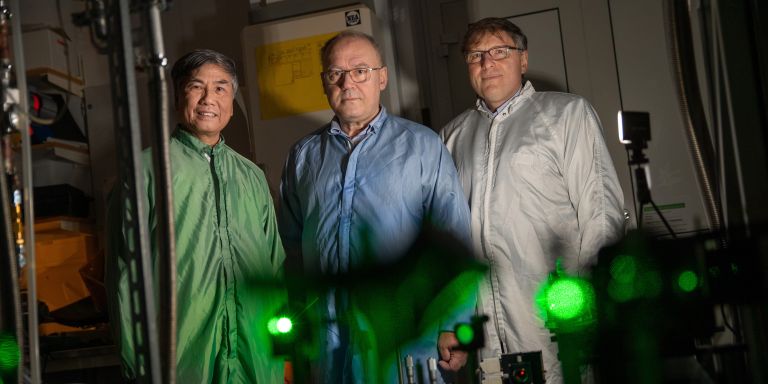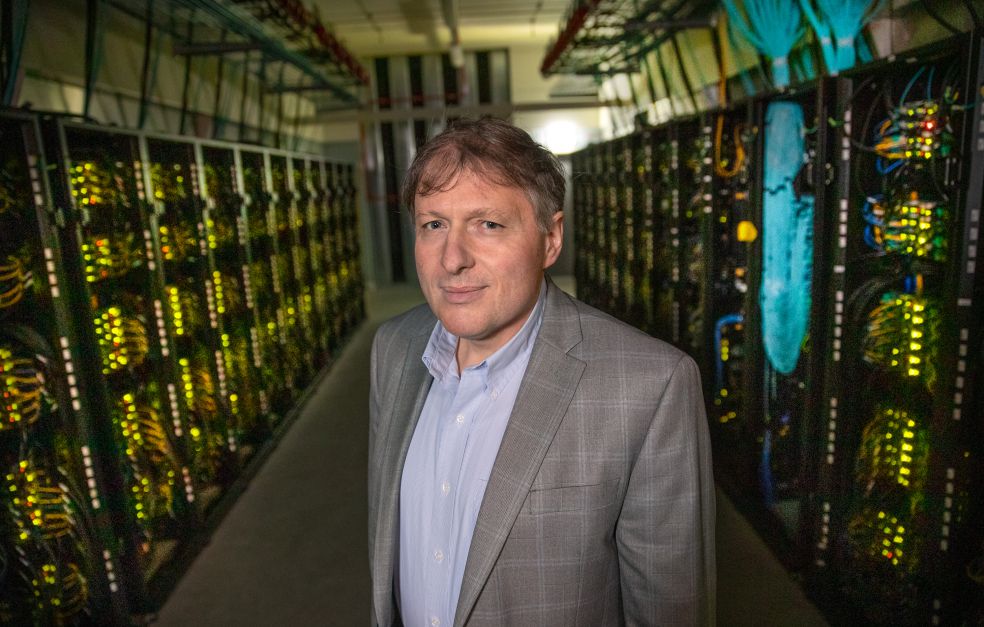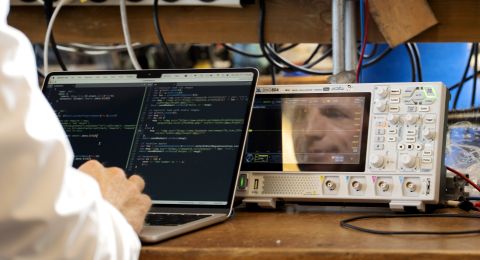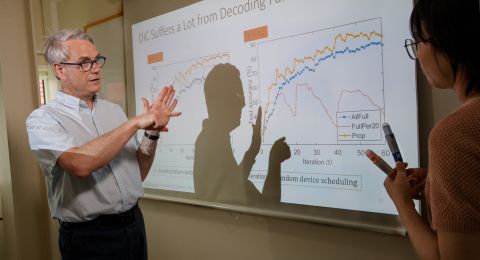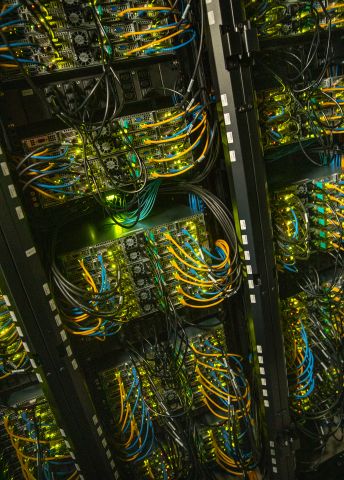
Project Grant 2018
Large band gap semiconductors for next generation quantum components
Principal investigator:
Professor Igor Abrikosov, Linköping University
Co-investigators:
Linköping University
Vanya Darakchieva
Mathias Schubert
Nguyen Tien Son
Stockholm University
Mohamed Bourennane
Institution:
Linköping University
Grant in SEK:
SEK 33.4 million over five years
Quantum mechanics describes the physical phenomena that control the world on the atomic scale – in contrast to classical Newtonian mechanics, which explains most of what we can see with the naked eye, such as the durability of buildings or vehicular movement. Quantum mechanics has been recognized since the early 20th century, and we have been developing technologies based on it for several decades. Transistors, diodes, lasers, and mobile phones are all based on quantum mechanical phenomena. We do not control those phenomena, however – we merely make use of their existence.
“The aim is that next generation electronics will actively influence and control quantum states, which is necessary to create quantum computers, for example. Some of the technology already exists, but it cannot yet compete with conventional technology,” says Igor Abrikosov.
He is Professor of Theoretical Physics at Linköping University, and is heading a project funded by Knut and Alice Wallenberg Foundation, whose goal is to create quantum bits at room temperature.
Logistics, sensors and encryption
A qubit is the smallest unit of quantum information. At present, computers store information as ones and zeros. Quantum states are manipulated to create a range of values between one and zero. This is known as “superpositioning” – a gray scale instead of black and white, and the qubit is the state encompassing all nuances at once.
“This offers infinitely more potential when it comes to computation, optimization and communication,” says Abrikosov.
For instance, controlling the quantum state, i.e. creating and controlling qubits, would make it possible to encrypt information so it cannot be read (a technology already used to some extent), to rapidly calculate the optimal solution to severe logistical problems, such as railroad disruption requiring large-scale rerouting of traffic, or design sensors sensitive enough to find pipes buried in the ground just by flying over them in a helicopter, or measure the temperature inside a living cell.
“And of course we would be able to do all sorts of things that we cannot even envision today. It would represent a huge technology shift. But controlling quantum states involves many challenges. One of them is to create a pure physical source where qubits can be stored, at least for a few milliseconds. That would suffice,” Abrikosov explains.
Some companies and research teams have managed this by using superconductors at very low temperatures, or ultracold atoms, in what is known as a “Bose-Einstein condensate”. The temperature is just a few thousandths of a degree above absolute zero.
Virtual experiments quicken the pace and cut the cost
Abrikosov and his colleagues in Linköping and Stockholm want to try a quite different approach. They are exploring the possibility of storing qubits in defects in semiconductors. Examples of such defects are vacancies, capable of storing quantum information, each vacancy then functioning as a qubit. Such defects can occur naturally, but if they are to be of any practical use, the researchers must succeed in creating them.
“Experiments have already shown that these qubits work at room temperature, which is a huge advantage. But as usual, there are no free lunches. It’s very difficult to design this defect in a controlled way, and create multiple identical defects.”
“Natural” qubit defects have been found in diamonds. The research team in Linköping is working with a particularly pure form of silicon carbide. Its crystal structure is similar to that of diamond, but it is a compound of silicon and carbon. So far, they have found two types of defect in the compound that could be used. This has attracted much interest among researchers across the world, who are standing in line for samples from the lab in Linköping.
Efforts continue in Linköping and Stockholm to find more defects, and to create ultrapure materials with only the desired defects. Abrikosov and his colleagues have developed new theoretical methods for describing and predicting properties of the materials even before they are synthesized. This means they can conduct virtual experiments on the Linköping supercomputers before they go on to carry out actual experiments. Far fewer experiments are required as a result, which saves both time and money – one of the compounds they are using costs 120,000 U.S. dollars for half a kilo.
“Now we are building new, unique equipment so we can study the samples we synthesize, and continuing our quest to find even better materials. The experimentalists in our team have already come up with a number of interesting suggestions that I hope to start testing this week,” Abrikosov says.
Text Lisa Kirsebom
Translation Maxwell Arding
Photo Magnus Bergström
